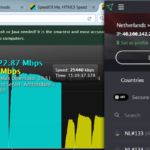Tips for Efficiently Managing and Monitoring Hyper-V Backup Processes
Hyper-V is a widely used virtualisation technology that allows organisations to consolidate workloads, enhance flexibility, and optimise server utilisation. As businesses increasingly rely on virtual machines (VMs) to run critical applications, the importance of safeguarding data through efficient backup processes becomes paramount. This article will explore essential tips for effectively managing and monitoring hyper-v backup processes to ensure data integrity and disaster recovery readiness.
Why Hyper-V Data Backup is Crucial
Virtual machines are susceptible to various risks, including hardware failures, data corruption, malware attacks, and human errors. A robust data backup strategy is essential to mitigate these risks and maintain business continuity. Implementing an automated hyperv backup solution to ensure data protection and disaster recovery readiness. Hyper-V data backup provides the following benefits:
1. Disaster Recovery Preparedness: In the event of a VM failure or system crash, a reliable backup enables quick recovery, minimising downtime and productivity losses. To ensure data security and disaster recovery readiness, it is crucial to regularly backup hyper-v vm.
2. Data Integrity and Compliance: Backup processes help ensure data consistency and compliance with industry regulations and data protection standards.
3. Protection Against Ransomware: Regular backups safeguard against ransomware attacks by providing an unaffected data repository to restore operations.
4. Test and Development Environments: Backups facilitate the creation of test and development environments, enabling IT teams to experiment without affecting production systems.

Tips for Efficiently Managing Hyper-V Data Backup Processes
1. Automate Backup Tasks: Manual backups are prone to oversight and can be time-consuming. Utilise automation tools to schedule regular backups, ensuring data is consistently protected without manual intervention. Choosing the right automated hyper-v backup software is crucial for ensuring reliable data protection and seamless disaster recovery
2. Distributed Backup Repositories: Store backup files on separate storage devices or locations to mitigate risks from hardware failures or natural disasters affecting a single location.
3. Prioritise Critical VMs: Identify and prioritise critical VMs, such as those hosting essential applications or containing sensitive data. Allocate backup resources accordingly to ensure their timely protection.
4. Monitor Backup Status: Implement a centralised monitoring system to keep track of backup status, completion times, and any errors or warnings. Regularly review these reports to identify and address potential issues promptly.
5. Leverage Incremental Backups: Instead of full backups every time, employ incremental backups that only store changes made since the last backup. This reduces backup time and storage space requirements.
Tips for Monitoring Hyper-V Data Backup Processes
1. Real-time Alerts: Set up real-time alerts and notifications to promptly address backup failures or any anomalies in the backup process.
2. Regular Backup Testing: Regularly test the backup recovery process to ensure data integrity and the ability to restore VMs effectively when needed.
3. Performance Monitoring: Monitor the performance impact of backup processes on the Hyper-V environment. Excessive resource utilisation during backups may affect VM performance.
4. Capacity Planning: Keep track of storage capacity and anticipate future requirements to avoid running out of space for backup storage.
5. Security and Access Control: Ensure backup files are securely stored and access restricted to authorised personnel.
Conclusion
Efficiently managing and monitoring hyper-v backup processes is vital for maintaining data availability, protecting against data loss, and ensuring smooth disaster recovery operations. A robust hyperv backup solution is an investment in your business’s long-term success and resilience. Businesses can enhance data protection and mitigate risks by automating backups, distributing backup repositories, and prioritising critical VMs. Additionally, implementing real-time alerts, regular testing, and performance monitoring will ensure the reliability of backup processes. A well-executed backup strategy safeguards critical data and enables organisations to operate confidently in their virtualised environments.
Cover Image by Freepik















